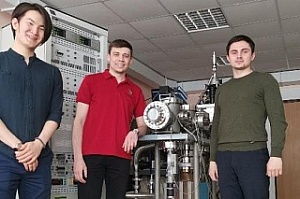A team of young radiophysicists is developing new materials based on silicon and germanium, which will improve the performance of modern transistors by increasing the speed of their response to changes in current.
A transistor is a semiconductor device that amplifies and generates electric current. It is used in telephones, hearing aids, televisions, tape recorders, children's toys, fire and burglar alarm systems, game consoles, and other modern devices.
- We want to increase the productivity of modern transistors, namely, their speed, by using a new type of material - thin layers of silicon and germanium, said Kirill Lozovoy, the project leader, Associate Professor at the Department of Quantum Electronics and Photonics, Faculty of Radiophysics. - Silicon and germanium have a different crystal structure, and combined together, they tense up and try to adjust the crystal structure to each other. This leads to the fact that the electron mobility changes in the material. If it increases, then the speed of transistors or the characteristics of other devices based on this material also increase.
The speed capability is the response time of the transistor to a change in the external signal. For example, we change the current at the input of the transistor, and the response describes how quickly it can respond to it. A high speed transistor can work with fast alternating signals, which helps to improve the operation of the device in which the transmitter is installed, for example, a TV or an alarm.
- Materials will be created using the Katun-100 molecular beam epitaxy setup. It enables spraying thin, nanometer-sized films of silicon and germanium or a substance consisting of silicon and germanium in any ratios, explained Kirill Lozovoy. - The procedure takes place in an ultra-high vacuum, by which extremely clean layers with the required concentration and very small thickness are sprayed. Due to the fact that the growth rate is very small, precipitation occurs literally one atom at a time.
According to the scientist, this method of creating thin layers and quantum dots on their surface can be used not only to create transistors but also to increase the absorption coefficient of photodetectors and the efficiency of solar cells.

